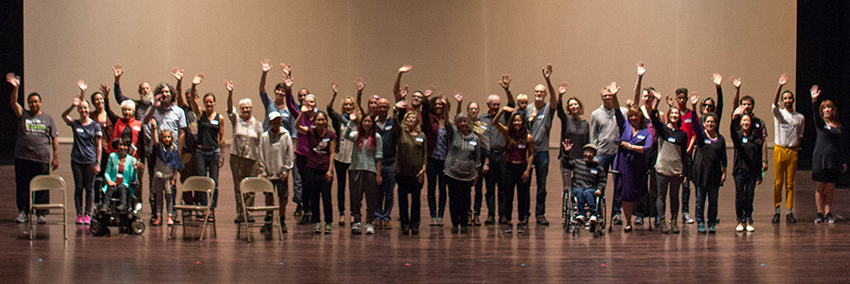In the 1960s, a collective of New York City dancers, composers, and visual artists pushed the boundaries of dance, creating works with a spirit of anarchy and permissiveness. Known as Judson Dance Theatre — a nod to the Judson Memorial Church in which the collective performed — the group’s experiments gave rise to postmodern dance. Now the Chamber Dance Company, the UW’s resident dance company, will perform works from Judson Dance Theatre’s first decade in a concert on October 13-16.
The Chamber Dance Company (CDC), founded by UW dance professor Hannah Wiley, is composed of former professional dancers pursuing an MFA degree in dance. It is one of few companies in the nation committed to preserving modern dance history by performing works of historic and artistic significance. Here Wiley answers questions about the upcoming concert.

Why present early works by Judson Dance Theatre now?
These works are now 50 years old. That amount of time provides some perspective on how the dances changed the course of contemporary dance — the indelible mark this choreography made on the work that followed and on works that are being created today.
What distinguishes these dances from other choreography of the same period?
Works being created at the time were often narrative and employed theatrical production elements, technical virtuosity, and a codified dance vocabulary. The Judson Church folks eschewed these values in favor of more utilitarian, democratic, and non-theatrical aspects to movement. They began disassembling formal characteristics of Western concert dance, using the compositional notions of John Cage as a starting point.
The Judson Dance Theatre artists were protestors—renegades. They changed contemporary dance forever and opened up fabulous possibilities for all choreographers to follow....
One of the dances in the concert involves a huge cast. Was that challenging?
Satisfyin Lover by Steve Paxton has 42 performers. I had a blast casting it. In his negotiations to license the dance, Steve made it clear that the casting should be inclusive. So, I started by setting up an age range that now runs from two to ninety years old (plus one in utero!). Then I started populating the dance with different sizes and skin colors — dancers and non. All of the performers are folks I know and like, so it was a bit like preparing a guest list for a party. In mid-August, one of the performers dropped out. On a whim, I e-vited the College’s new divisional dean for the arts, Catherine Cole, to perform with us. To my surprise and delight, she said yes and has been a wonderful addition to the cast.

Paxton also developed and named a technique known as Contact Improvisation. Can you explain what that is?
Contact Improvisation (CI) is an improvised dance form practiced by two or more people who attempt to keep a physical point of contact between their bodies while moving freely. The dancing may be slow or fast and often involves rolling and weight-sharing. Steve Paxton's piece in the CDC concert doesn’t have Contact Improvisation in it, but concertgoers can see Contact Improvisation performed in a pre-curtain duet in the Meany Theatre main lobby. UW dance professor Rachael Lincoln and MFA student Brandin Steffensen will perform the duet in the spirit and style of the early 70s, in tribute to Steve Paxton and the role Contact Improvisation played in the development of postmodern dance.
How have CDC dancers responded to Judson Dance Theatre choreography?

Most of the dancers feel more of a kinship with this choreography than they do with work by, say, Martha Graham, Paul Taylor, or Louis Falco. They are comfortable with Contact Improvisation, and some attend CI "jams" with regularity.
What do you hope audiences take away from this concert experience?
I have learned over the years that I cannot anticipate what the audience will take away from a Chamber Dance concert since everyone brings a personal history to a dance performance. However, I hope audience members allow themselves to be open to the intrinsic value of these works and realize the political and artistic force this choreography wielded on the art world. The Judson Dance Theatre artists were protestors — renegades. They changed contemporary dance forever and opened up fabulous possibilities for all choreographers to follow, as is evidenced by the closing work on the program — a piece created 30 years later by Zvi Gotheimer — in which the groundwork laid and freedom granted by the Judson group is evident.